► Eleventh-generation Honda Civic driven
► New e:HEV hybrid powertrain tested
► Takes the fight right to Golf, Focus, Corolla
Honda has quite a job on its hands with the new Civic, mostly because of the hatchback’s legacy. It’s been around since the 1970s and has an enviable reputation – one the new 11th-gen car will have a job to uphold. It’s a different formula for the latest car though, ditching the previous model’s buzzy petrol engines and sharp manual gearboxes in favour of a hybrid-only approach.
Having a self-charging hybrid as the only option is a bold move when most of the Civic’s rivals, such as the Ford Focus and the Volkswagen Golf still come with a full complement of conventional petrol and diesel engines.
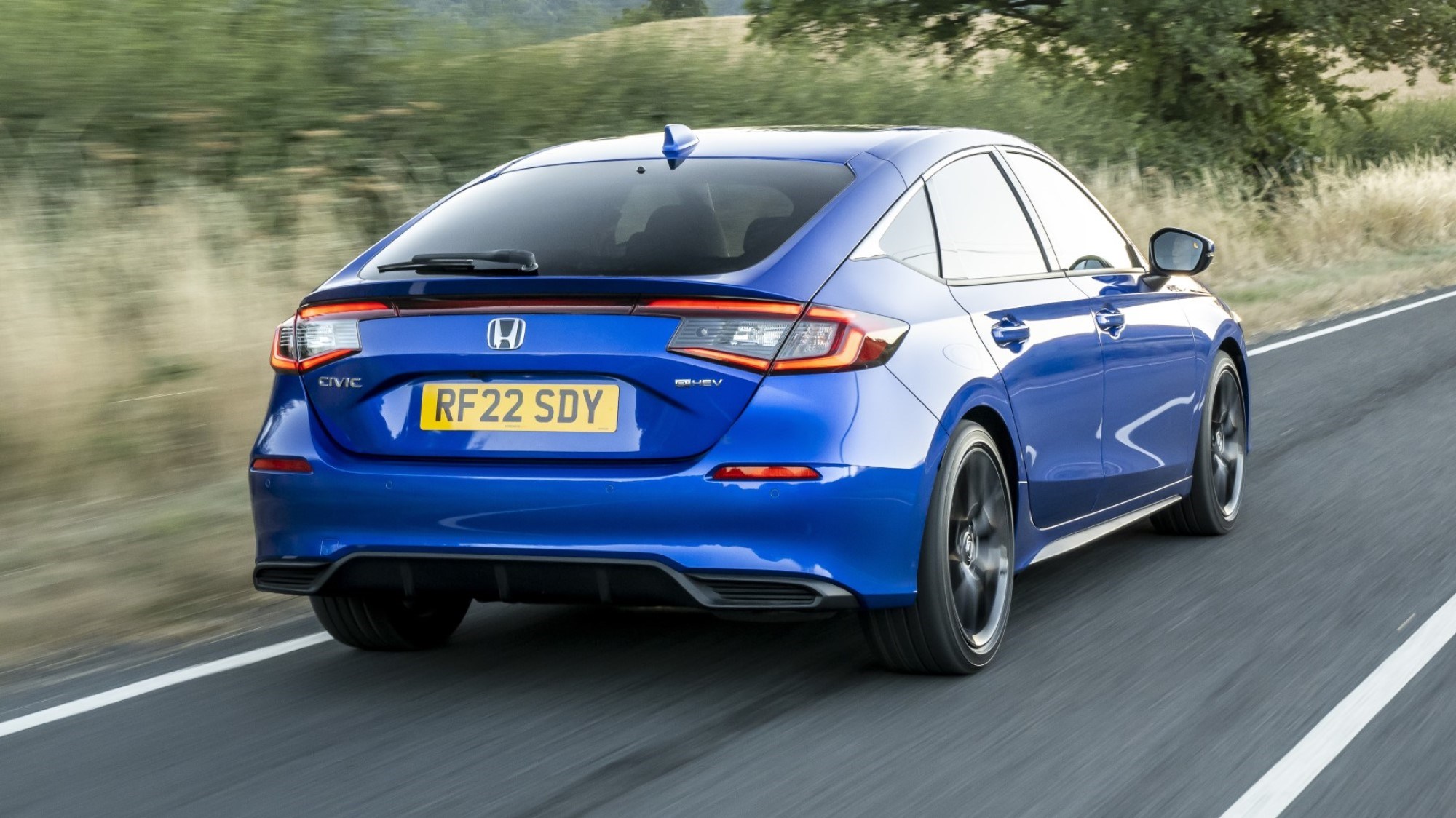
But hear us out because there’s a lot to like about the new Civic. And, if you’re the type to pour petrol on your morning cornflakes, there’s a new Type R hot hatchback too, which will has a manual gearbox and a proper turbocharged 2.0-litre petrol engine.
Come on then. What’s this hybrid system like?
Very interesting. The Civic’s hybrid powertrain is a variant of the e:HEV system used in the latest Jazz and HR-V. However, unlike those cars, it’s based around a 2.0-litre four-cylinder petrol engine which was developed specifically for the new Civic.
Unlike the hybrid system used in the Toyota Corolla, there’s no gearbox – though the system is badged ‘e-CVT’, Honda’s product manager dislikes the nomenclature as it conjures up memories of desperately mooing CVT superminis. That really isn’t the case here.
The electric motor pushes the car along for most of the time, while the petrol engine burbles away quietly in the background, generating electricity. That means the cabin is a very quiet place to be, and makes the Civic feel very much like a regular electric car to drive (because, in a sense, it is).
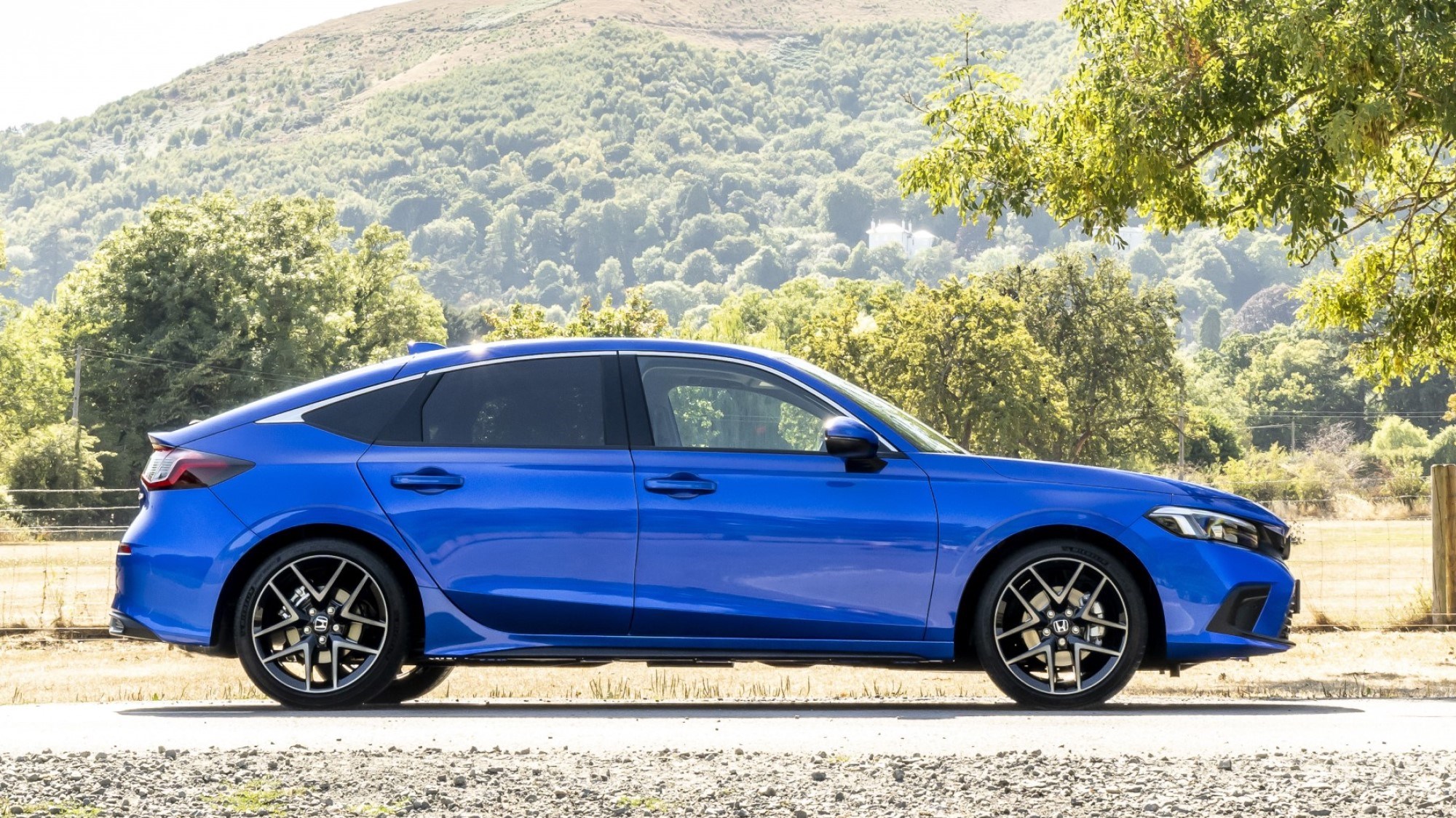
At motorway speeds the petrol engine flares up and send power to the wheels. A clutch pack directly links the engine to the front wheels, sending drive to the tarmac at a 1:1 ratio. This is more efficient at high speeds than the hybrid approach.
For all you nerdy engineering types, that means there’s no gear reduction between the crankshaft and the front wheels. It’s like riding a single-speed bicycle – it’s difficult for the petrol engine to make the car move at low speeds, but far easier to accelerate once you’re motoring along.
The obvious benefit is efficiency. CO2 emissions are as low as 108g/km, while driven carefully you’ll see an easy 60mpg around town and well over 50mpg the rest of the time. That’s approaching PHEV levels of efficiency, and it genuinely doesn’t take much effort to achieve.
Sounds a bit over-engineered. What’s it like to drive?
Given how complicated it is, Honda’s e:HEV powertrain works very well. It can go from a crawl right up to motorway speeds on the electric motor, which means its smooth. And, because the engine doesn’t need to rev hard to generate electricity, the cabin is very refined. It’s approaching electric car levels of serenity – the only appreciable noise is a bit of tyre roar.
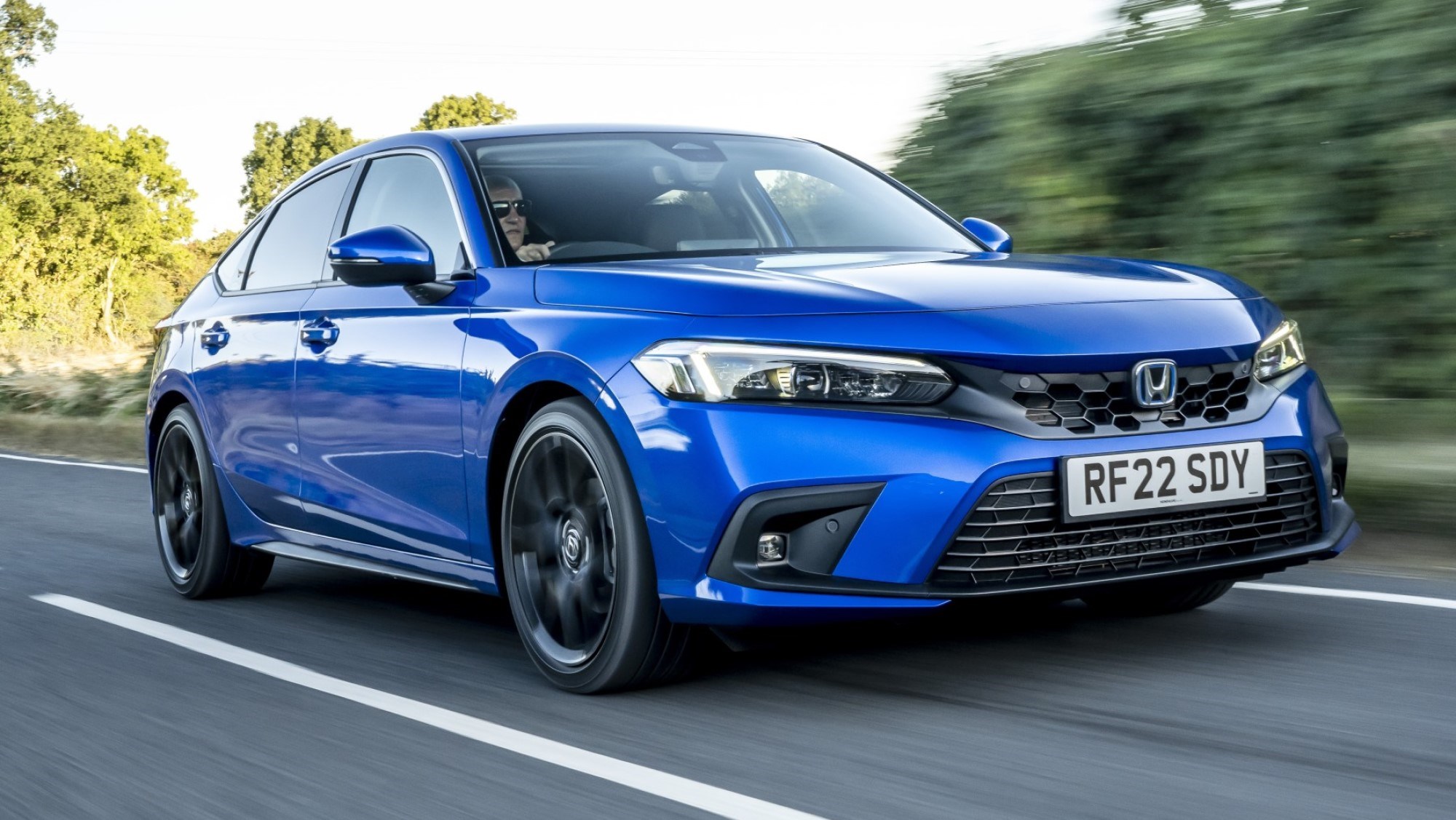
Unlike the Toyota Corolla, the Civic’s petrol engine sounds quite good when you’re pressing on, (although Honda has helped it out with a bit of artificial engine noise through the speakers). And it’s quick – you get 181bhp and 258lb/ft of torque. It’s certainly rapid enough to outstrip the big-selling 150bhp-ish versions of the Focus and Golf.
When the car’s running in Sport mode, there’s a piece of software that artificially dips the engine revs to make it feel like there’s a gearbox between the powertrain and wheels. It’s clever – and it might fool you if you jumped behind the wheel without being told about it first. Combined with the rather VTEC-ey fake engine note, it’s actually quite entertaining…
What about the handling?
Again, Honda’s done a good job because, despite the heavy electrification, the new Civic remains fun to drive. Its body is 22% more rigid than the old car’s, which means the chassis doesn’t flex when you hammer it around corners. Grip levels are also impressive thanks to the standard fit Michelin Pilot Sport 4 tyres and wider rear track.
Also, because the battery pack is mounted under the rear seats, the chassis stays settled when you change direction quickly. Honda has balanced the front and rear of the new Civic well, with just enough forward bias towards to make the front end turn in keenly. You won’t be lift-off oversteering like you can in a Focus, but it’s a damn close-run thing in terms of engagement.
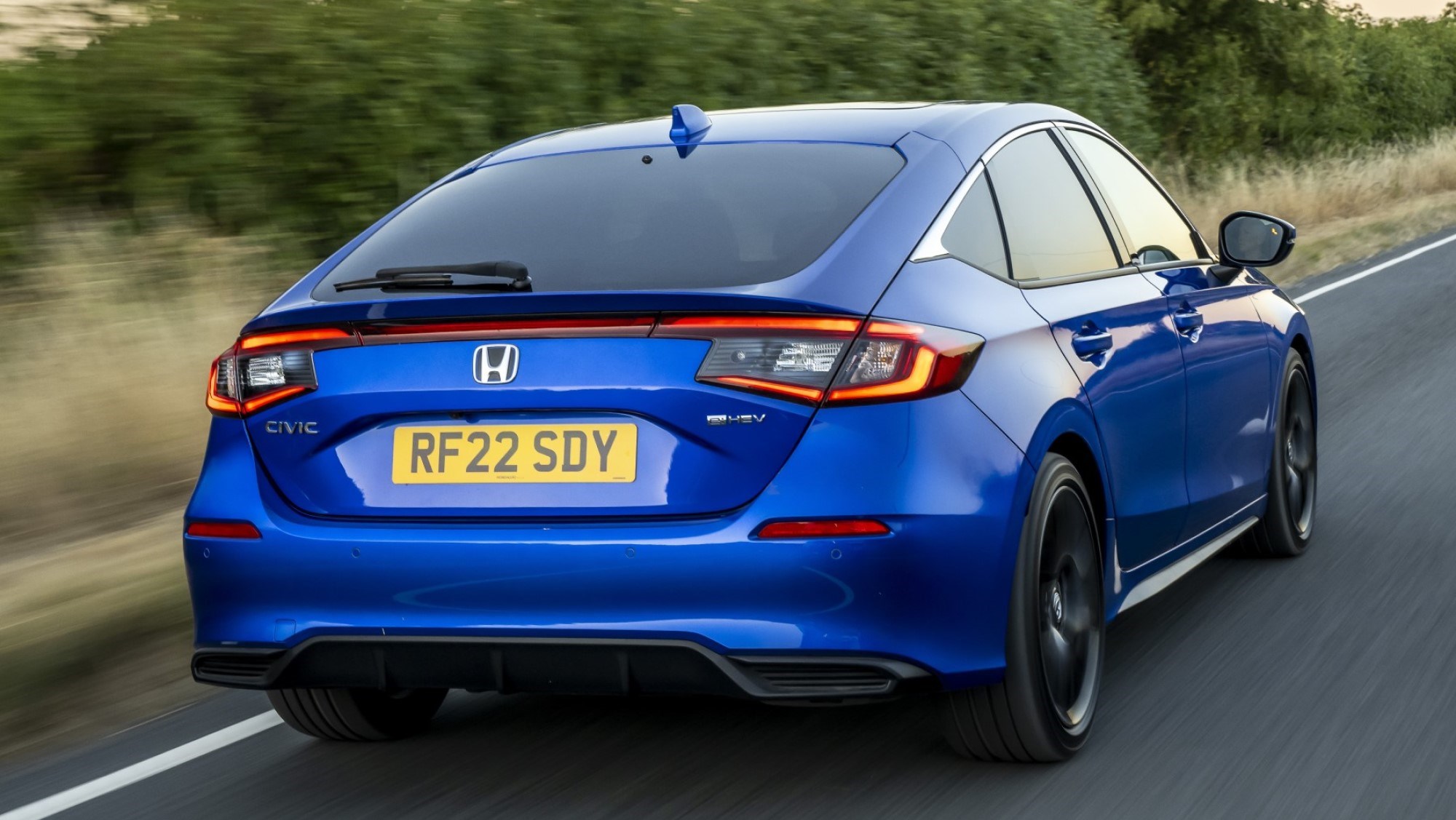
The ride in general is truly excellent, effectively taking the edge off all but the largest potholes. Even on pockmarked British tarmac it’s comfortable. Firmer than some, yes – it’s not as pillowy as a Citroen C4, but it strikes a really nice balance.
Quick and well-weighted steering suffers the same dearth of feel as most of its rivals, but it’s still up there with the best in class. Certainly more engaging than a Golf.
Is the interior any good?
Definitely. It’s up there with the best in the class. Honda’s new 9.0-inch infotainment system looks great and, praise be, the dashboard comes with proper rotary climate controls rather than the god-awful haptic slider bars you get on the Volkswagen Golf and SEAT Leon.
The new Civic is also way better built than the latest Golf. All the touchpoints are trimmed in either soft-touch materials or aluminium – and Honda even bothered to wrap the door pulls in padded leather. Only a patch of weird, scratchy-textured plastic on the centre console stands out.
There’s a lot of space, too. Head and shoulder room is great up front, while the seat and steering column have enough adjustability to allow giraffes to get comfortable behind the wheel. Space in the back is a bit more restricted thanks to that sloping fastback roofline, but legroom has increased by 35mm over the previous generation model, which is a noticeable difference.
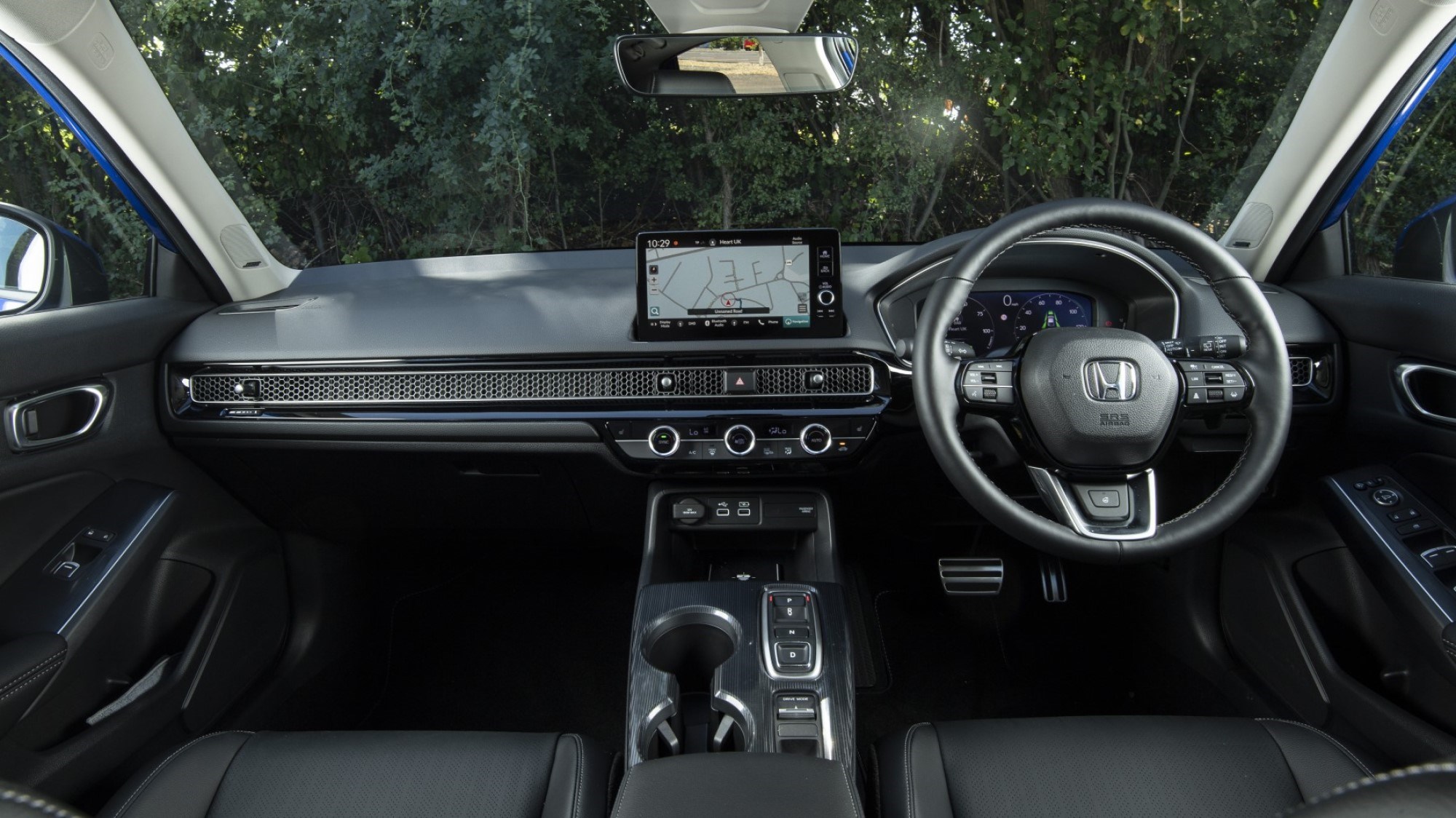
A word to the wise, though. If you’ve got a family of six-footers, we’d recommend sticking with the entry-level Sport specification. The more expensive Advance model comes with a sunroof which robs some precious headroom from rear-seat occupants. If you’re tall, you’ll need to scoot down on the seat to stop your scalp from rubbing on the headlining.
There’s plenty of standard equipment, with Sport models featuring LED headlights, a 10.2-inch digital gauge cluster, dual-zone air conditioning, heated seats, a rear-view camera and a wireless smartphone charger. Stepping up to the flagship Advance grade brings a 12-speaker BOSE audio system, electrically adjustable front seats and a heated steering wheel.
So how much?
So the Civic isn’t exactly cheap, but much of that can be put down to the lack of an entry-level model. The Civic’s base trim level is more like a mid-spec for most manufacturers – its sole powertrain, significantly more powerful than all but the range-topping performance models from its rivals.
Put it against a more representative competitor, like a 150hp SEAT Leon FR, and the Civic isn’t bad value at all. In terms of monthly payments, it’s actually cheaper than most of these rivals.
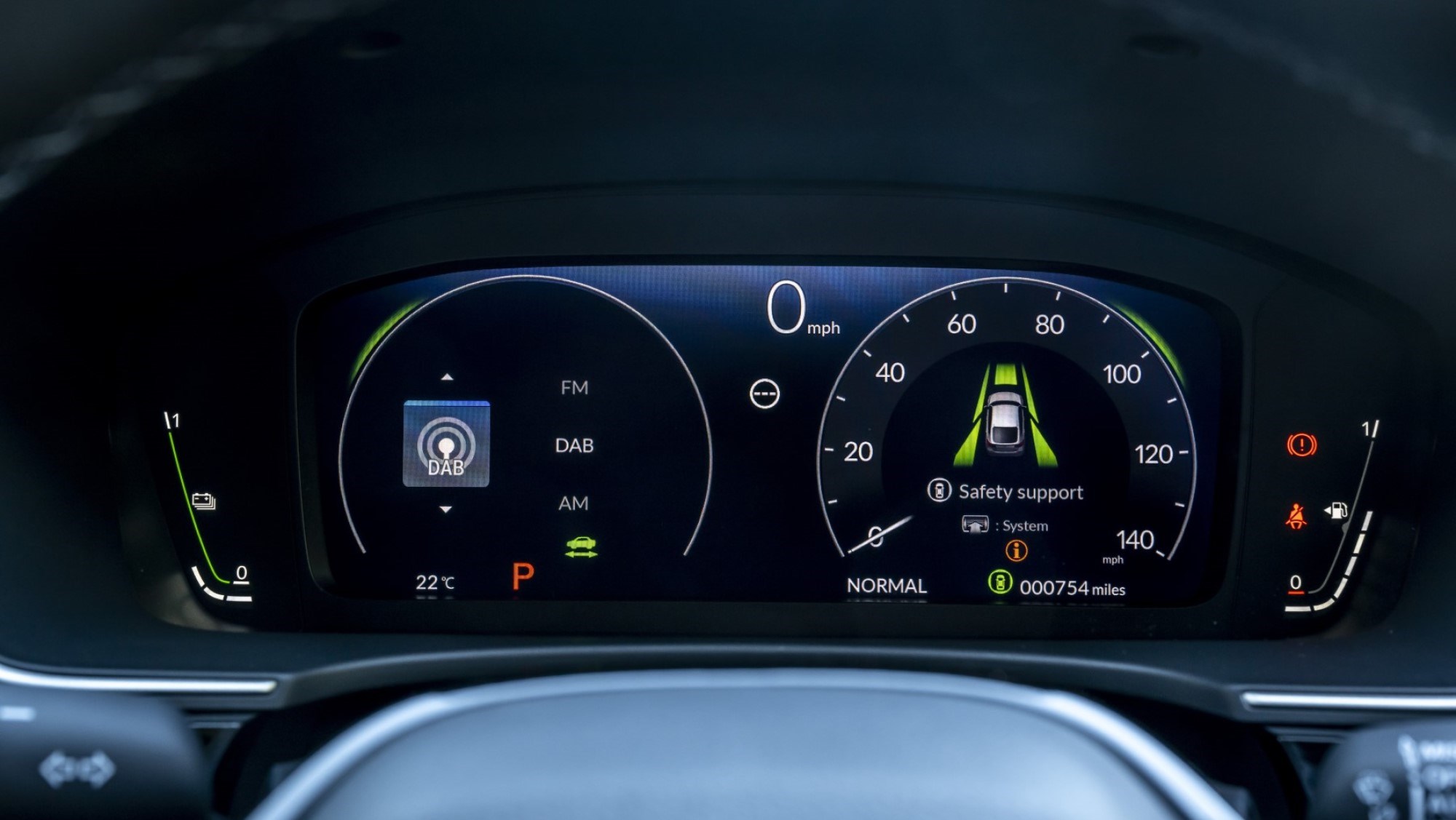
The Corolla does undercut it rather, but only the slow 1.8-litre variant – step up to the 2.0 Corolla and it’s pretty much on a par. We know which we’d rather drive.
Honda Civic: verdict
The new Honda Civic is fun to drive, economical, spacious and fast enough for what it needs to be. It should become a strong contender in the family hatchback market – but that’s only if punters can see past the higher purchase price.
Spend an afternoon in one, though, and you’ll soon see where your extra money goes. It’s very well equipped and a damn sight better built than its key VAG rivals, the Volkswagen Golf and the SEAT Leon. Most importantly, it’s a nicer place to be than its main sparring partner, the Toyota Corolla.